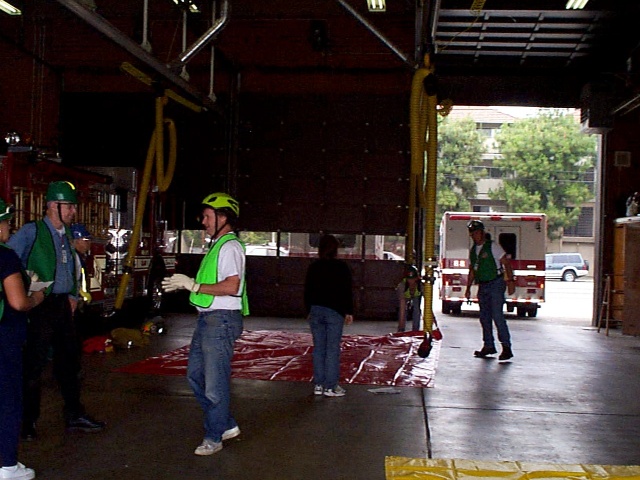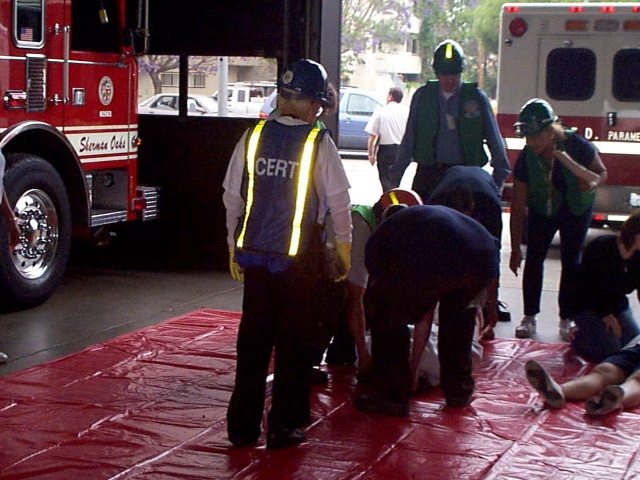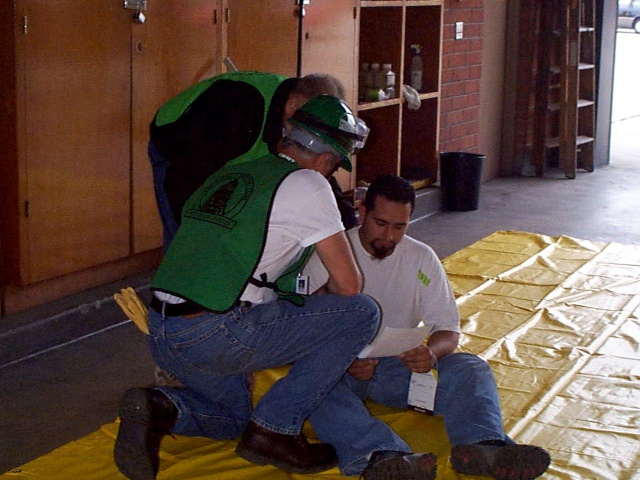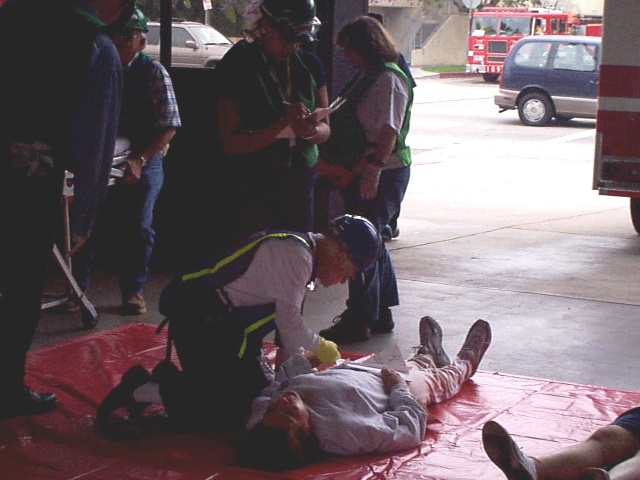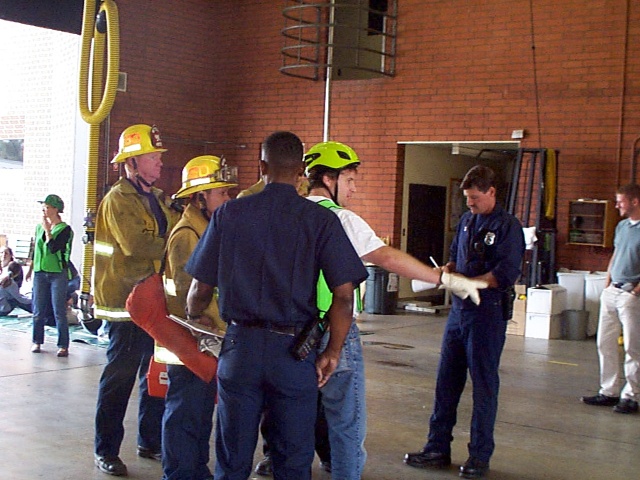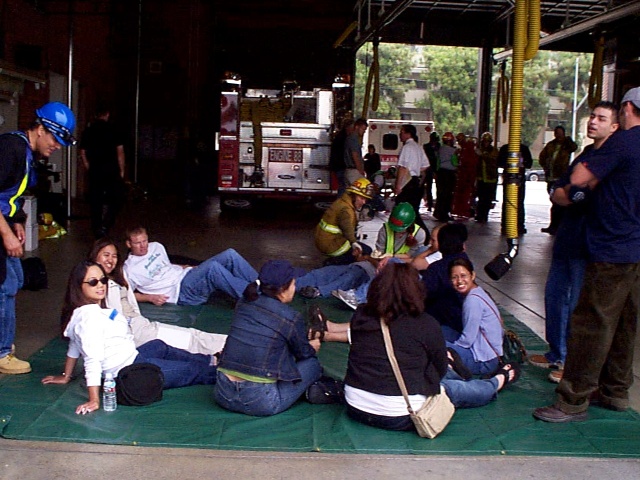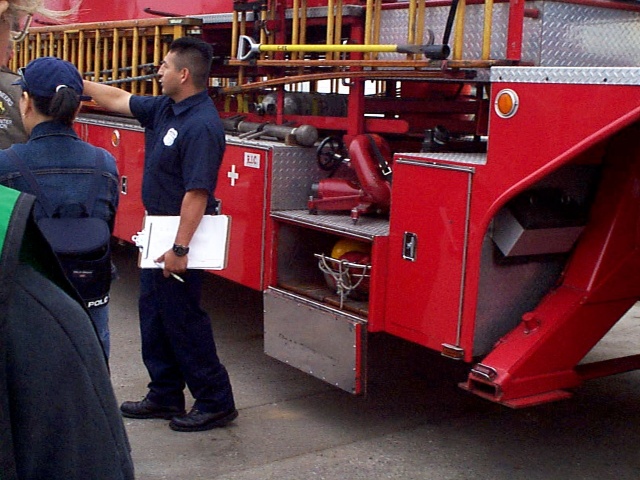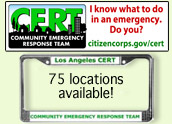2003 Division 3 MCI Drills
LAFD Division III held MCI (Mass Casualty Incident) training for the entire Division on four separate days. The scenario for the drill was an explosion at an office, with 20
patients. CERT members were invited to participate in the drill as survivors of the disaster who are already mobilized and working the incident upon the arrival of the Fire Department.
With his vision and foresight, Assistant Chief Greg West embraced the possibilities of the CERT program and its graduates. In command of Division III, Chief West ensured that CERT graduates and
firefighters who participated in the Multi-Casualty Incident (MCI) drills worked together, learned from each other and practiced sharing the tasks for each incident. With Chief West's support we
had a new beginning with the LAFD to show our worth through our training, dedication and support to the firefighters.
Below is a report on the June 7, 2003 drill.
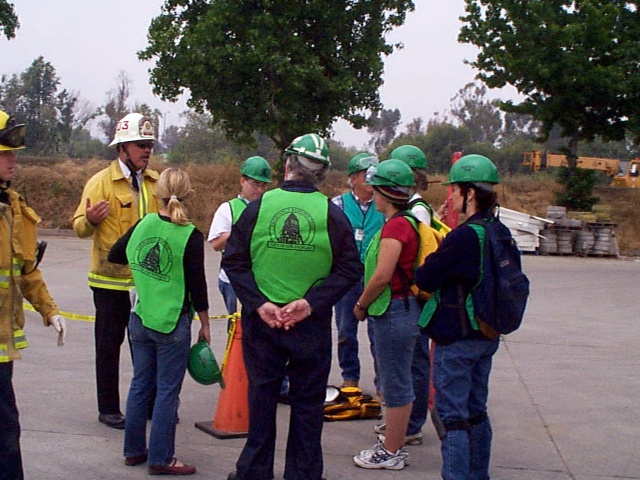
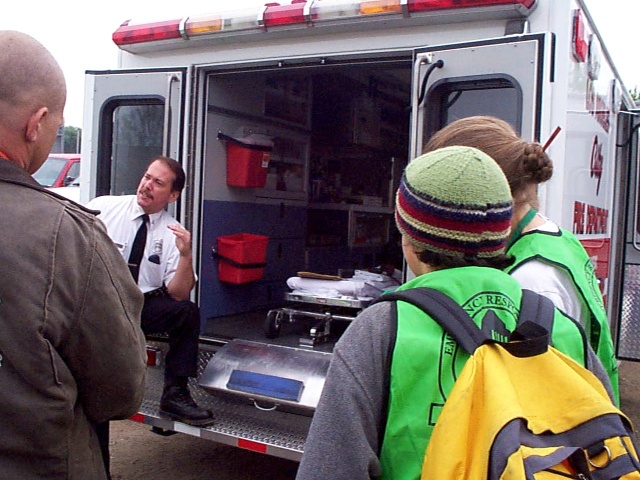

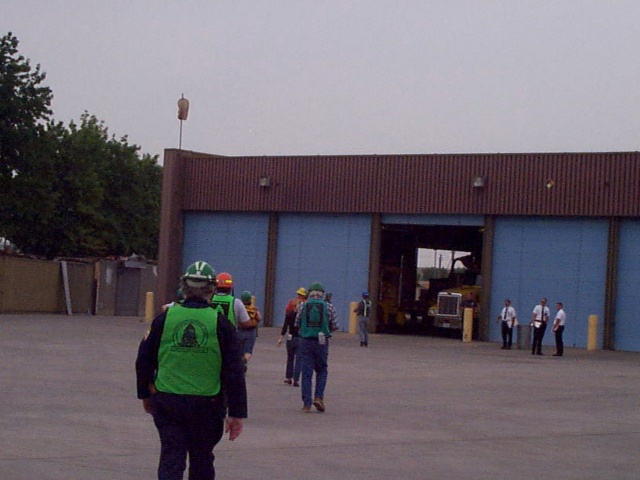
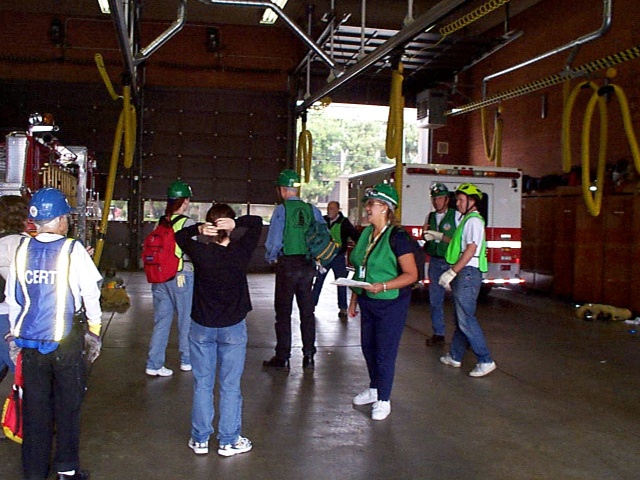
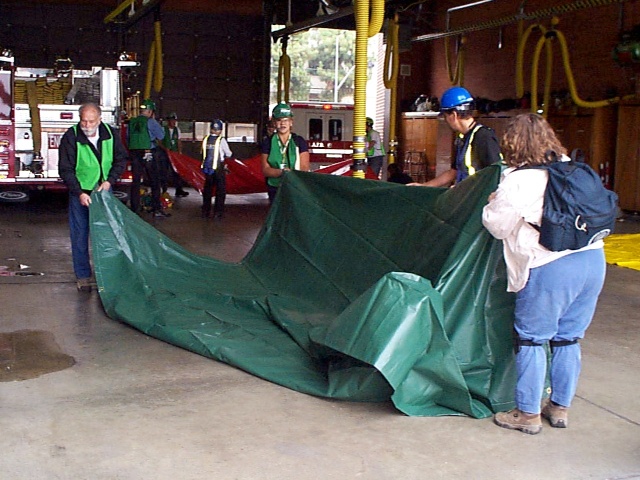
June 7, 2003 - Division 3 MCI Drills
Reported by: Hector Alfaro, CERT-Battalion 17
My expectations for the June 7th MCI (Mass Casualty Incident) drill were undetermined due to the prior drill held on May 25th.
May 25th's drill incident reviews were eyeopeners for all present; LAFD and CERT members were able to freely express their opinions of everyone's accomplishments and/or deficiencies. Although
candid and sometimes highly critical, the emphasis was on "we are here to learn." A second quote worthy to mention was: "compliments to Captain Lee and how CERT is prepared." May 25th established
CERT's role for future MCIs with the LAFD.
June 7th started with LAFD roll call (about 15 fire companies were present) and a special thanks to all the volunteer CERT members present and the EMT trainees who would act as victims. This was
the first time most present were participating on an MCI Drill. So to start, LAFD gave a 25-minute presentation on the START (Simple Triage and Rapid Treatment) and ICS (Incident Command System)
protocols. Then we broke into five groups for short training sessions: First-On-Scene, Triage, Treatment, Transportation, and Communications. The sessions were very informative, especially when
CERT's role in the MCIs was put into play. A reminder was given by one of the instructors: "It is very important that CERT be prepared and always have their CERT badges and green vests for
identification purposes."
The Drills
The scenarios for the drills were to be an explosion at a building, with 20+ patients. The building sustained minimal structural damage, no fire hazards or secondary devices were present.
Emphasis was to be given to START and ICS protocol.
Drill #1
At 1145, eleven CERT members (Team B) were first-on-scene. A semi-form of the ICS structure was established. CERT performed a "hot lap" (quick assessment) of the scene and performed preliminary
recon. CERT members went in, in teams of two and started search and rescue. Within minutes the walking wounded were escorted out, triaged with tape and a marker (labeled MINOR) and placed
adjacent to the staging area.
At 1155, the LAFD arrived on scene and CERT's Incident Commander informed LAFD of CERT's preliminary assessment, the number of team members inside performing search and rescue, and made the CERT
members available for assistance. LAFD directed a few CERT members to unload backboards from their fire engines as they made their preliminary size-up.
At 1200, twelve CERT members (Team A) arrived on scene and established a treatment area and laid out the MINOR, DELAYED and IMMEDIATE tarps. Within minutes they were ready to start receiving and
treating patients. At 1203, Team B gave notification they were ready to start receiving patients. While LAFD established their ICS, CERT established a perimeter at the direction of LAFD and
assisted firefighters in extracting patients from the building, using the backboards and walking others out.
At 1204, patients were escorted by CERT members to the treatment area; even some of the walking wounded were used as litter bearers initially.
At 1205, LAFD took control of the treatment area and CERT members made themselves available for assistance.
At 1210, after all patients were transported, all CERT members from Team B were asked to report to the treatment area for further instruction. Team B was deployed through the treatment area along
with Team A.
At 1225, the drill was called.
Drill #2
The second drill had the same scenario. However, this time LAFD and 10 CERT members (Team A) arrived on scene at the same time. LAFD established their ICS and CERT established their team leader
and a scribe. Immediately, LAFD, via the chain of command, put to use the eight additional CERT members. In the treatment area, LAFD established a liaison for CERT, in order to maintain a proper
structure in the chain of command and minimize questions to the command treatment officer. Fifteen minutes into the drill, Team B was called in and arrived for assistance.
CERT members were assigned to:
- work side-by-side with firefighters,
- search and rescue,
- assist in establishing a perimeter,
- transport necessary equipment from fire engines, ambulances and the treatment area,
- escort or move patients on backboards and gurneys to the treatment area,
- preliminary triage,
- provide first aid in the treatment area,
- the final walk-through of the incident site to ensure no victims were missed and the area was secure.
Both drills were a success.
In the past it was unknown how LAFD and CERT teams would work together as a team if and when there was a major disaster (i.e., earthquake, terrorist attack, etc.). Now LAFD and CERT know how to
work as a team. Our capabilities have now been shown to the department.
As a reminder to CERT members:
- keep up-to-date with your material (go to www.cert-la.com for updates),
- establish the ICS structure and communication,
- learn from others with possibly more experience or knowledge,
- all CERT members need to check-in at the staging area and wait for assignments,
- rapid mass deployment is too unsafe and does not allow you to document team or resource information,
- And, when LAFD arrives on scene, let them take the lead; they are the ones paid to be heroes.
One last note, the key component for all of us was mentioned both days: "We are here to learn."
